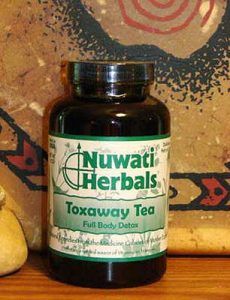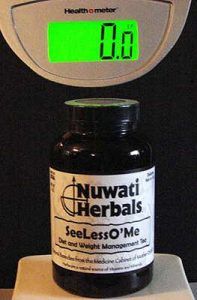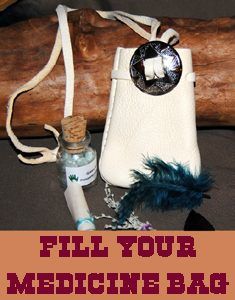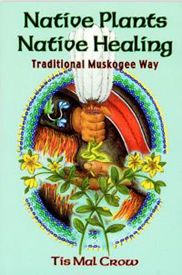Remedies Home A B C D E F G H I J K L M N O P Q R S T U V W X Y Z
T
Tendonitis:
- Ginger Root – Utilized as both a spice and medicine throughout the world.
Throat Problems – Ulcers, Sore Throat, Tonsillitis:
- American Licorice – Chewed or used in teas for internal issues, in a poultice externally.
- Blackberry -Leaves are made into gargles to soothe mouth and throat ailments.
- Bloodroot – Primarily used as a medicine for respiratory and digestive problems, it also used externally. Today, we know it is toxic and the FDA has classified it as unsafe.
- Buck Brush – Applies to several North American shrubs used in herbal medicine.
- Chokecherry – Used as a source of food and medicine, it was considered one of the most important herbs in Native American medicine.
- Eucalyptus – Teas and ointments used for various purposes.
- Evening Primrose – Used for both food and in medicinal remedies, decoctions were used for internal and external ailments.
- Goldenrod – Long used for various ailments.
- Goldenseal – Used internally and externally for medicinal issues. It should not be taken by pregnant women.
- Honeysuckle – Used in traditional herbal remedies for thousands of years.
- Kava – Used there for thousands of years as a folk remedy and as a social and ceremonial beverage.
- Licorice Root – Used as flavoring in food and for herbal remedies.
- Marshmallow Root – Dating back thousands of years, this root has been used as food and medicine.
- Mullein – A tobacco-like plant and one of the oldest herbs, it has a long history of use as a medicine.
- Native Hemlock – Used by Native Americans as a dye, for tanning hides, making baskets and wooden items, as well as medicinal remedies.
- Oak – Acorns and bark used for various medical ailments.
- Olive Oil – A traditional tree crop long used in foods and medicines.
- Plantain – Considered to be one of the nine sacred herbs by the ancient Saxon people and has a long history of use as an alternative medicine dating back to ancient times.
- Raspberry – Leaves and fruits used in various medical issues.
- Sage – Used for thousands of years in cooking and like other culinary herbs, it has long been thought to be a digestive aid aid and appetite stimulant.
- Skullcap – A powerful medicinal herb, it was cultivated Native Americans for use in several remedies. Pregnant women should not take Skullcap.
- Slippery Elm – The tree had many traditional uses by Native Americans.
- Sumac – Viewed by some tribes as a sacred plant, Sumac was used for food and medicine.
- Sweetflag – Has a long history of medicinal use in many herbal traditions.
- Wild Black Cherry – The dried inner bark was traditionally used in tea or syrups for several health problems.
- Wild Rose – There are hundreds of species that have been used medicinally for thousands of years.
- Wild Ginger – Native Americans used the roots as a seasoning and medicinal herb.
Toothache:
- Allspice – Dried unripe berries have long been used teas.
- American Licorice – Chewed or used in teas for internal issues, in a poultice externally.
- Black Raspberry – Roots and leaves are boiled into tea or chewed, and washes used externally.
- Buffaloberry – Used as food and in herbal remedies. Overindulgence can cause severe problems including death.
- Fendler’s Bladderpod – Used crushed leaves for internal and external use.
- Ginger Root – Utilized as both a spice and medicine throughout the world.
- Hops – Though most commonly known for its use in beer, it also has medicinal properties.
- Plantain – Considered to be one of the nine sacred herbs by the ancient Saxon people and has a long history of use as an alternative medicine dating back to ancient times.
- Saltbush – Many species used for various conditions.
- Slippery Elm – The tree had many traditional uses by Native Americans.
- Sweetflag – Has a long history of medicinal use in many herbal traditions.
- Tobacco – Long been important in Native American culture for social, religious, ceremonial purposes as well as in medicinal remedies.
- Willow – The leaves and bark of the willow tree have been used since times of ancient Egypt and Greece.

Nuwati Herbals’ Toxaway Tea – For detoxing, liver health, and skin. Available at Legends’ General Store.
Toxins (to eliminate):
- Alfalfa – Utilized in teas or added to food for various medicinal remedies. Avoid if you have an auto-immune problem.
- Uva Ursi – Used medicinally since the second century. Pregnant women should not use it.
- Yerba Mate – A species of Holly that has a long history as a medicinal herb.
Tuberculosis:
- Buffaloberry – Used as food and in herbal remedies. Overindulgence can cause severe problems including death.
- Hibiscus – Various species used in traditional herbal medicines dating back to Roman times.
- Horehound – Whole plant used internally and externally. People with gastritis or peptic ulcer disorders should use it cautiously.
- Licorice Root – Used as flavoring in food and for herbal remedies.
- Oak – Acorns and bark used for various medical ailments.
- Prickly Pear Cactus – Native Americans used the younger pads for food and in teas; while mature pads were used in poultices.
- Sage – Used for thousands of years in cooking and like other culinary herbs, it has long been thought to be a digestive aid aid and appetite stimulant.
- Goldenrod – Long used for various ailments.
- Shavegrass – Used for centuries as a remedy for various medical conditions.
- Sumac – Viewed by some tribes as a sacred plant, Sumac was used for food and medicine.
- Tobacco – Long been important in Native American culture for social, religious, ceremonial purposes as well as in medicinal remedies.
- Wild Black Cherry – The dried inner bark was traditionally used in tea or syrups for several health problems.
- Wild Ginger – Native Americans used the roots as a seasoning and medicinal herb.
Tumors:
- Buck Brush – Applies to several North American shrubs used in herbal medicine.
- Dong Quai – Used for over a thousand years to treat several conditions.
- Honeysuckle – Used in traditional herbal remedies for thousands of years.
- Oat Straw – food source and medical remedy since prehistoric times.
- Olive Oil – A traditional tree crop long used in foods and medicines.
- Pennyroyal – Long used to treat medical problems and to eradicate pests.Pennyroyal should not be used in any way by pregnant women. Over ingestion of this herb has caused death.
- Senna – A large genus of flowering plants found to be helpful in many remedies.
Typhoid:
- Cardinal Flower – Roots, leaf tea and poultices were used internally and externally.
- Senna – A large genus of flowering plants found to be helpful in many remedies.
U
Ulcer:
- American Ginseng – Used in teas and tonics, and sometimes smoked by Native Americans.
- Boswellia – Fragrant resin utilized in various ailments. Pregnant or breastfeeding women should not use.
- Buck Brush – Applies to several North American shrubs used in herbal medicine.
- Burdock – Roots and leaves utilized internally and externally. Avoid if pregnant or nursing.
- Geranium – Scented geranium used in teas for various conditions.
- Native Hemlock – Used by Native Americans for several purposes.
- Pau d’arco – Long used for a wide range conditions.
- Shavegrass – Used for centuries as a remedy for various medical conditions.
- Slippery Elm – The tree had many traditional uses by Native Americans.
Urinary Problems:
- Cat’s Claw – Used in teas and tonics for over 2,000 years.
- Dandelion – Used in both foods and internal and external medical remedies.
- Goldenrod – Long used for various ailments.
- Goldenseal – Used internally and external for medicinal issues. It should not be taken by pregnant women.
- Greenbriar – Teas and salves used internally and externally.
- Guarana – Containing caffeine, it has many of the same effects as coffee.
- Gymnema Sylvestre – Has been used as natural treatment for diabetes for nearly 2,000 years.
- Horsemint – Leaves and flowering stems used in teas, tonics, and salves for various medical issues. Pregnant women should not use it.
- Juniper – Used internally and externally for medicinal purposes. Pregnant women should not use this herb as it has been known to cause miscarriage.
- Plantain – Considered to be one of the nine sacred herbs by the ancient Saxon people and has a long history of use as an alternative medicine dating back to ancient times.
- Poke – Though parts of this plant are highly toxic to livestock and humans, it has long been used as food and medicine by Native Americans.
- Prickly Pear Cactus – Native Americans used the younger pads for food and in teas; while mature pads were used in poultices.
- Rose Hip – The fruit of the rose plant has long been used in teas to soothee various problems.
- Saw Palmetto – Long prized as a food product and in medicinal remedies.
- Shavegrass – Used for centuries as a remedy for various medical conditions.
- Sumac – Viewed by some tribes as a sacred plant, Sumac was used for food and medicine.
- Tribulus – This herb has been used in traditional medicine for centuries.
- Uva Ursi – Used medicinally since the second century. Pregnant women should not use it.
- Wild Ginger – Native Americans used the roots as a seasoning and medicinal herb.
- Yarrow – Used for thousands of years, especially to stop bleeding.
Uterus Problems:
- Pleurisy Root – Long been found to be effective for many respiratory disorders
V
Vaginal Problems including Dryness:
- Black Cohosh – Roots of the plant were used in teas for various ailments.
- Slippery Elm – The tree had many traditional uses by Native Americans.
Varicose Veins:
- St John’s Wort – Most commonly known as an anti-depressant, it also has other medical uses.
- Witch Hazel – Widely used for medicinal purposes by American Indians.
Venereal Diseases:
- Buffaloberry – Used as food and in herbal remedies. Overindulgence can cause severe problems including death.
- Indian Paintbrush – Used for several purposes these plants are potentially toxic if the roots or green parts are consumed.
- Milkweed – Though it can be toxic if not prepared properly, Milkweed was used as food and medicine, as well as in making cords, ropes, and coarse cloth. Warning: Milkweed may be toxic when taken internally, without sufficient preparation.
- Rabbit Tobacco – Was thought to have had spiritual or mystic powers by many Indians.
- Wild Ginger – Native Americans used the roots as a seasoning and medicinal herb.
Vertigo:
- Black Cohosh – Roots of the plant were used in teas for various ailments.
- Broom Snakeweed – Roots and leaves used in steam therapies, teas, and poultices.
- Ginko Biloba – One of the most ancient trees in existence, it has been used for food and medicine.
- Tobacco – Long been important in Native American culture for social, religious, ceremonial purposes as well as in medicinal remedies.
Viruses:
- Honeysuckle – Used in traditional herbal remedies for thousands of years.
- Oak – Acorns and bark used for various medical ailments.
- Rosemary – Used for culinary purposes and in medicinal remedies.
Vomiting (to induce):
- Fendler’s Bladderpod – Used crushed leaves for internal and external use.
- Black Gum – Used by Native Americans in baths, washes, and tonics.
Vomiting (to stop):
- Galangal – Similar to other ginger-related herbs, it is primarily used for digestive disorders.
- Star Anise – The fruit of a small tree with a licorice-like flavor long used in medical remedies.
W
Warts:
- Mayapple – Having been long surrounded by folklore, this plant was used for various medical purposes. Because of its toxicity, this herb should only be used by professional Herbalists.
- Milkweed – Though it can be toxic if not prepared properly, Milkweed was used as food and medicine, as well as in making cords, ropes, and coarse cloth. Warning: Milkweed may be toxic when taken internally without sufficient preparation.

Nuwati Herbals SeeLessO’Me Tea – For diet, appetite suppressant, energy, laxative, stomach soother, and more. Available at Legends’ General Store
Weight (to reduce):
- Boswellia – Fragrant resin utilized in various ailments. It should not be used by pregnant, breastfeeding women and children.
- Evening Primrose – Used for food and medicinal remedies, decoctions were used for internal and external ailments.
- Glucomannan – A dietary fiber that has long been used in Asia. It is not recommended for use by pregnant or breastfeeding women.
- Grapefruit – Seeds, pulp, and inner rind are used for internal conditions.
- Green Tea – Made solely with the leaves of Camellia Sinensis, it is known for its many helpful properties.
- Lecithin – Found in several plants, it benefits various body systems.
- Marshmallow Root – Dating back thousands of years, this root has been used as food and medicine.
- Stevia – An herb long used as a sweetener with medicinal remedy properties.
- Wild Garlic – Used throughout its history for both culinary and medicinal purposes.
- Yerba Mate – A Holly species with a long history as a medicinal herb.
Whooping Cough:
- Broom Snakeweed – Roots and leaves used in steam therapies, teas, and poultices.
- Cattail – Utilized as food and in external and internal medical remedies.
- Horehound – Whole plant used internally and externally. People with gastritis or peptic ulcer disorders should use it cautiously.
- Kola Nut – Long used in medicinal remedies, spiritual practices, and ceremonies. Pregnant or nursing women should not use it, nor those with intestinal or stomach ulcers, blood pressure, insomnia, or heart disorders.
- Marshmallow Root – Dating back thousands of years, this root has been used as food and medicine.
- Red Clover – Traditionally used for several conditions.
- Star Anise – The fruit of a small tree with a licorice-like flavor long used in medical remedies.
- Wild Black Cherry – The dried inner bark was traditionally used in tea or syrups for several health problems.
Worms – See Intestinal Worms
Wounds:
- Arnica – Used externally only for aches, pains, and wounds. Poison if taken internally.
- Broom Snakeweed – Roots and leaves used in steam therapies, teas, and poultices.
- Buck Brush – Applies to several North American shrubs used in herbal medicine.
- Buffaloberry – Used as food and in herbal remedies. Overindulgence can cause severe problems, including death.
- Cattail – Utilized as food and in external and internal medical remedies.
- Chokecherry – Used as a source of food and medicine, it was considered one of the essential herbs in Native American medicine.
- Cotton – Roots, leaves, and seeds have been used to treat many conditions.
- Dogwood – B ark, berries, and twigs used in decoctions internally and externally.
- Echinacea – Roots were chewed, dried in tea, or pulverized for external use.
- Eucalyptus – Teas and ointments used for various purposes.
- Evening Primrose – Used for food and medicinal remedies, decoctions were used for internal and external ailments.
- Fenugreek – Used internally and externally for various medicinal purposes.
- Gentiana – Extremely bitter herb used for both internal and external problems. It may irritate persons who have ulcers and may also cause headaches, nausea, or vomiting.
- Goldenrod – Long used for various ailments.
- Goldenseal – Used internally and externally for medicinal issues. Pregnant women should not take it.
- Green Tea – Made solely with the leaves of Camellia Sinensis, it is known for its many helpful properties.
- Hibiscus – Various species used in traditional herbal medicines dating back to Roman times.
- Horehound – Whole plant used internally and externally. People with gastritis or peptic ulcer disorders should use it cautiously.
- Horsemint – Leaves and flowering stems used in teas, tonics, and salves for various medical issues. Pregnant women should not use it.
- Juniper – Used internally and externally for medicinal purposes. Pregnant women should not use this herb as it has been known to cause miscarriage.
- Lemon Balm – A calming herb used since the Middle Ages.
- Marshmallow Root – Dating back thousands of years, this root has been used as food and medicine.
- Passion Flower – Has a long history of use among Native Americans and was adopted by early European colonists. Do not take passionflower if you are pregnant or breastfeeding.
- Plantain – Considered to be one of the nine sacred herbs by the ancient Saxon people and has a long history of use as an alternative medicine dating back to ancient times.
- Prickly Pear Cactus – Native Americans used the younger pads for food and teas, while mature pads were used in poultices.
- Sarsaparilla – Used for centuries in a wide variety of medicinal remedies.
- Shavegrass – Used for centuries as a remedy for various medical conditions.
- Western Skunk Cabbage – This plant with a “skunky” has long been used by Native Americans as a topical medicine.
- White Pine – The inner bark, young shoots, twigs, pitch, and leaves have long been used by Native Americans in medicinal remedies.
- Yarrow – Used for thousands of years, especially to stop bleeding.
Y
Yeast Infection:
- Pau d’arco – Long used for various conditions.
- Uva Ursi – Used medicinally since the second century. Pregnant women should not use it.
These many remedies listed here are only a small sample of those used in the past and continue to be used today. Herbal remedies seem to be most beneficial for problems where prescription medications don’t truly solve the problem but only suppress the symptoms temporarily, have side effects that may be as bad as the problem itself, or cause addiction. Please note that some of the conditions require other kinds of intervention. Be sensible with your health and consult with your primary care professional when needed.
Mixing natural remedies and traditional treatments can many times be unwise. A doctor should be consulted before pregnant, nursing women, children, or babies, are given any herbal remedy.
Disclaimer: These statements have not been evaluated by the Food and Drug Administration, and we make no medical claims nor intend to diagnose, treat, or heal medical conditions. Pregnant or nursing women or persons with known medical conditions should consult their physician before taking any herbal products.
© Kathy Alexander/Legends of America, updated November 2022.
Also See:
Remedies Home A B C D E F G H I J K L M N O P Q R S T U V W X Y Z


